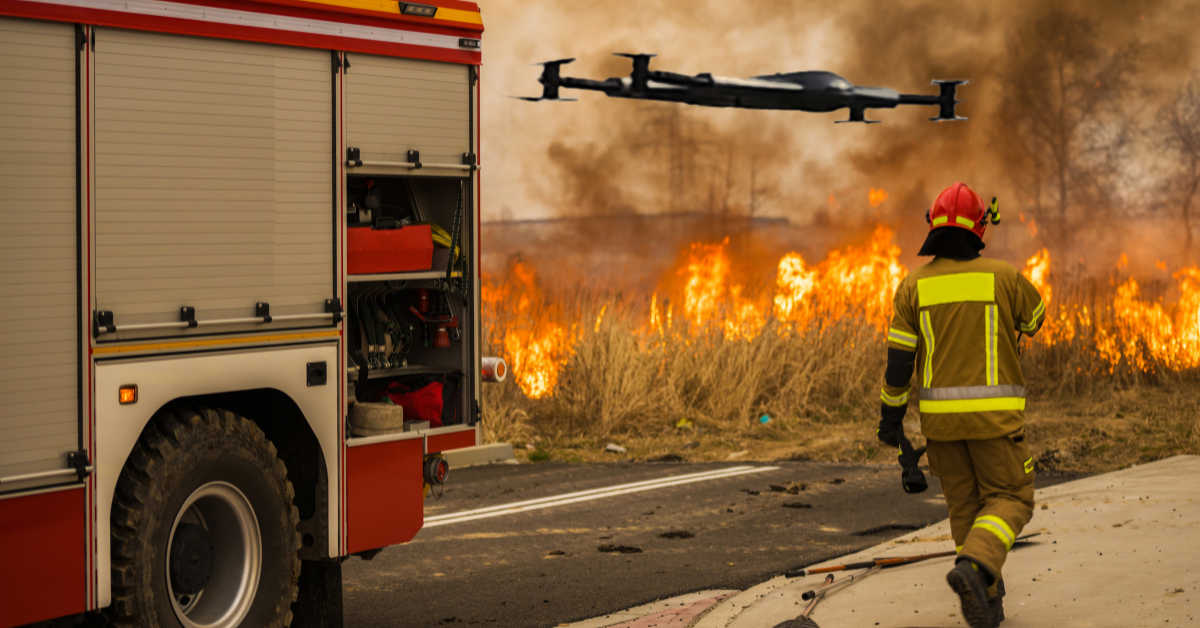With the continuous climate change, natural disasters every year have become a challenge and a cause of loss for many nations. From storms, floods, and droughts, authorities have been upgrading their emergency preparedness and response to a different level.
Emergency drones have been a technological advancement that has played a vital role. Regarding natural disaster response, agencies have used this equipment for pre- and post-emergency situations. In this article, discover how it plays a role in countering challenges with response procedures and their uses.
Challenges With Disaster Ops: Emergency Drones as Aid
Before dealing with preparation, the actual act, and post-assessment, it is better to identify the expected challenges in doing a natural disaster response. Drone technology, on the other hand, has its fair share of functionalities that can deal with some of these challenges:
- Limitless Access to Affected Areas
- Difficulty in Doing Search and Rescue Ops
- Communication Hindrances
- Lack of Real-Time Situational Awareness
- Risking the Life of Response Team
- Little Accessibility and Visibility
- Environmental Monitoring and Hazard Detection
- Resource Allocation Challenges
Now to further discuss how these challenges can take direct help from emergency drones, read more below:
Challenge #1: Limited Access to Affected Areas
Access to the affected area has always been challenging during and after the disaster. Rescuers will find it unsafe and hard to reach. Thus, it usually challenges them to send aid or assess the area. However, flying a drone over an emergency scene greatly aids in taking action.
Rescuers can have direct aerial surveillance, which will give them an idea of what is happening in the area. Before sending the team, there is precise information on the safest way to avoid hazardous areas.
Challenge #2: Difficulty in Doing Search and Rescue Ops
Locating, identifying, and rescuing are critical procedures in search and rescue ops. Disasters like floods, landslides, and earthquakes usually leave inaccessible areas for the emergency authorities. And as this operation takes time and is labor-intensive, rescuers will need aid to make it more manageable.
Flying a drone with a thermal camera over an emergency scene can be more efficient. Rather than relying on manual searching, the equipment can pinpoint heat signatures. It means it can identify any potential lives with precise location. Thus, it can help the team save more lives than usual.
Challenge #3: Communication Hindrances
Another challenge with response operations is dealing with communication from the base and the people in the disaster-damaged area. For instance, the risk of response during heavy rain in flood-prone areas is inevitable. With a well-built structure, the emergency drone can help the rescuers address disrupted communication networks.
It can be a temporary communication relay carrying equipment like mobile network repeaters or Wi-Fi hotspots. So, besides their existing mode of communication, the drone can also back them. Hence, it strengthens coordination with the response teams despite the situation.
Challenge #4: Lack of Real-Time Situational Awareness
Real-time awareness is crucial for emergency response. The idea of what is going on will help the rescue teams make the best decision on how they can respond. However, obtaining real-time information can be challenging, especially in a critical situation.
Flying a drone over an emergency scene can ensure the team gathers live footage. The ones with high-quality cameras and sensors can even provide crisp and clear videos and photos. That way, the team can better understand the situation, leading to better assessment and action.
Challenge #5: Risking the Life of the Response Team
When it comes to rescue operations, risk will always be present. As much as the emergency unit aims to save more lives, ensuring the lives of their people is also a top priority. Thus, technological solutions like emergency drones are here to save the day.
Respondents face significant risks during and after natural disasters that must be addressed to complete their tasks. For example, after a landslide, parts of the area may be inaccessible, posing risks to personnel.
To mitigate these dangers, deploying drones for initial assessment is crucial. Real-time footage from the drones can guide whether a physical visit is necessary, identifying safe paths and reducing risks for rescuers en route.
Challenge #6: Little Accessibility and Visibility
Poor visibility is an often risk of a rain emergency ops. But, a drone can help the team oversee the situation. High-quality cameras can strengthen the ground-based assessment method. On-going and aftermath viewing can be possible with the help of it.
In addition, this equipment and its mapping features can aid in detailed imaging of areas with rugged terrain. This means that the team can understand the location before the catastrophe.
Drone technology can aid in preparation matters, where they can deploy it and gather essential details of the disaster-prone area. The data can help them with their prediction process and preparation planning. That way, during and after the disaster, they will know how to handle the place.
Challenge #7: Environmental Monitoring and Hazard Detection
Awareness of the surroundings is crucial for emergency teams. Delegating their service while ensuring their safety is possible when there is a reliable hazard detector.
Some environmental hazards include air quality, temperature, and radiation levels. With these kinds of factors, securing the safety of the rescue team and the affected population is the top priority. A drone can aid in addressing these issues.
Emergency drones, with their specialized sensors, can help the team collect data on environmental conditions. The information will help them assess the risks. Hence, they can take appropriate measures to protect the health and safety of the casualties. It also ensures the welfare of the team.
Challenge #8: Resource Allocation Challenges
Resources like budget, workforce, and time – like any other sector, the emergency unit can face fair challenges in dealing with these. The existence of drone technology continues beyond improving their everyday work operations. Using it in their tasks also saves their resources.
For instance, instead of recruiting an extra workforce to do a task, they can maximize their existing people and let the drone support their work. Missions like search and rescue can save time, as having an eye from above can help them swiftly overlook the situation. And compared to renting a helicopter or getting satellite imaging to assess the place, the drone is much more budget-friendly.
The Future of Drones in Emergency Rescue Operations
Advanced technology is what can deal with the risk of heavy rain, flooding, earthquakes, landslides, and other natural catastrophes. In the aspect of preparedness and rescue operations for these events, an emergency drone is a form of aid that will continue to exist.
Drone technology itself is continuously evolving. Drone manufacturers are advancing their products from autonomous flights to AI-powered features, strengthening their body compact. Ergo, emergency units will undoubtedly continue investing in this equipment.
By learning about this technological solution, emergency teams can strengthen their work strategies and operations.
Conclusion
Saving lives and securing the responders’ safety are the two things that matter most in emergency ops. And it is indeed challenging from the perspective of rescue teams.
However, equipment like emergency drones can support their bravery. It is there not just to view and access some unreachable areas. It is also a support system for the team to guide them with the best decision and action. A technological solution that will continue to grow and aid in more emergency operations.




